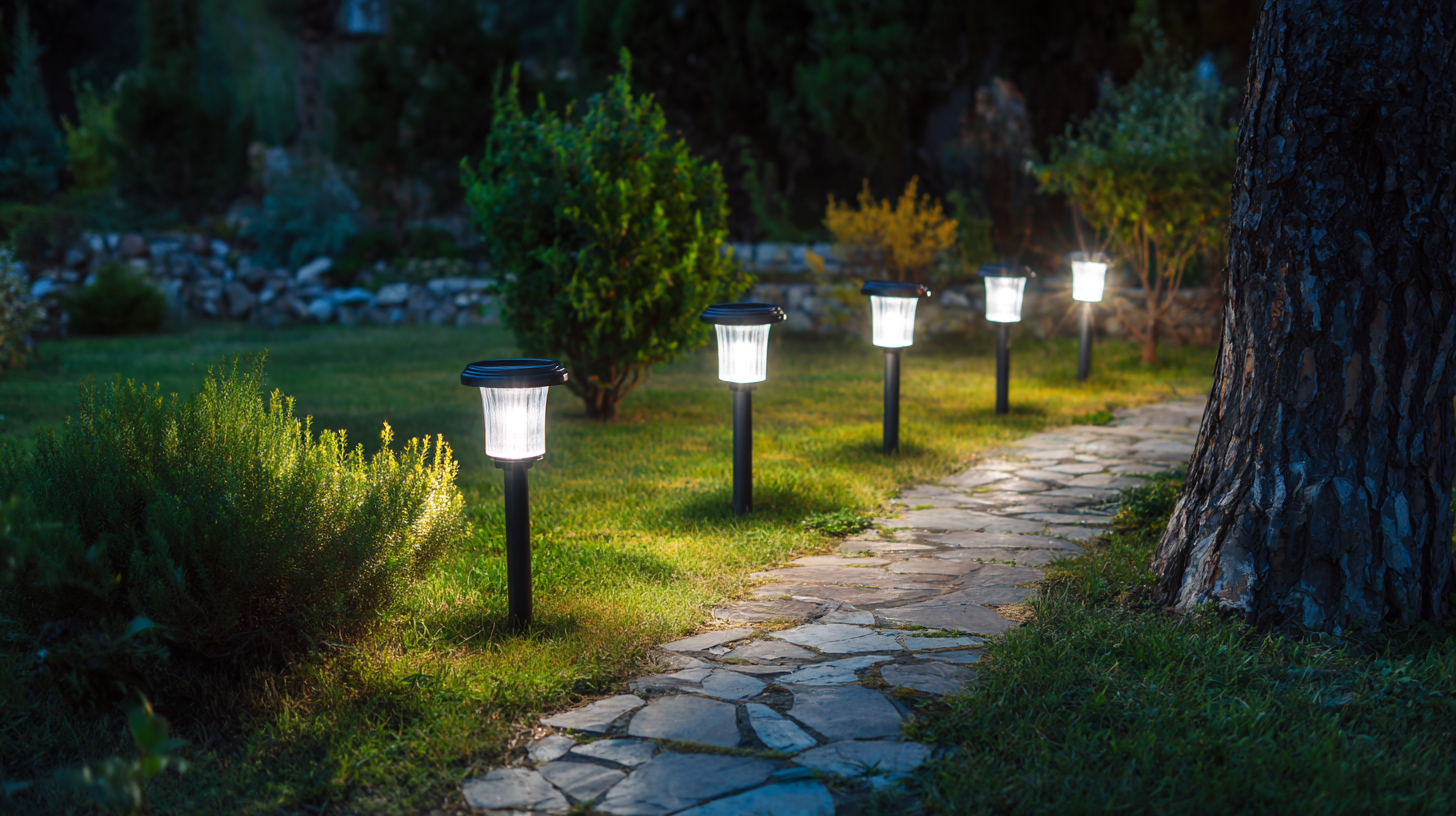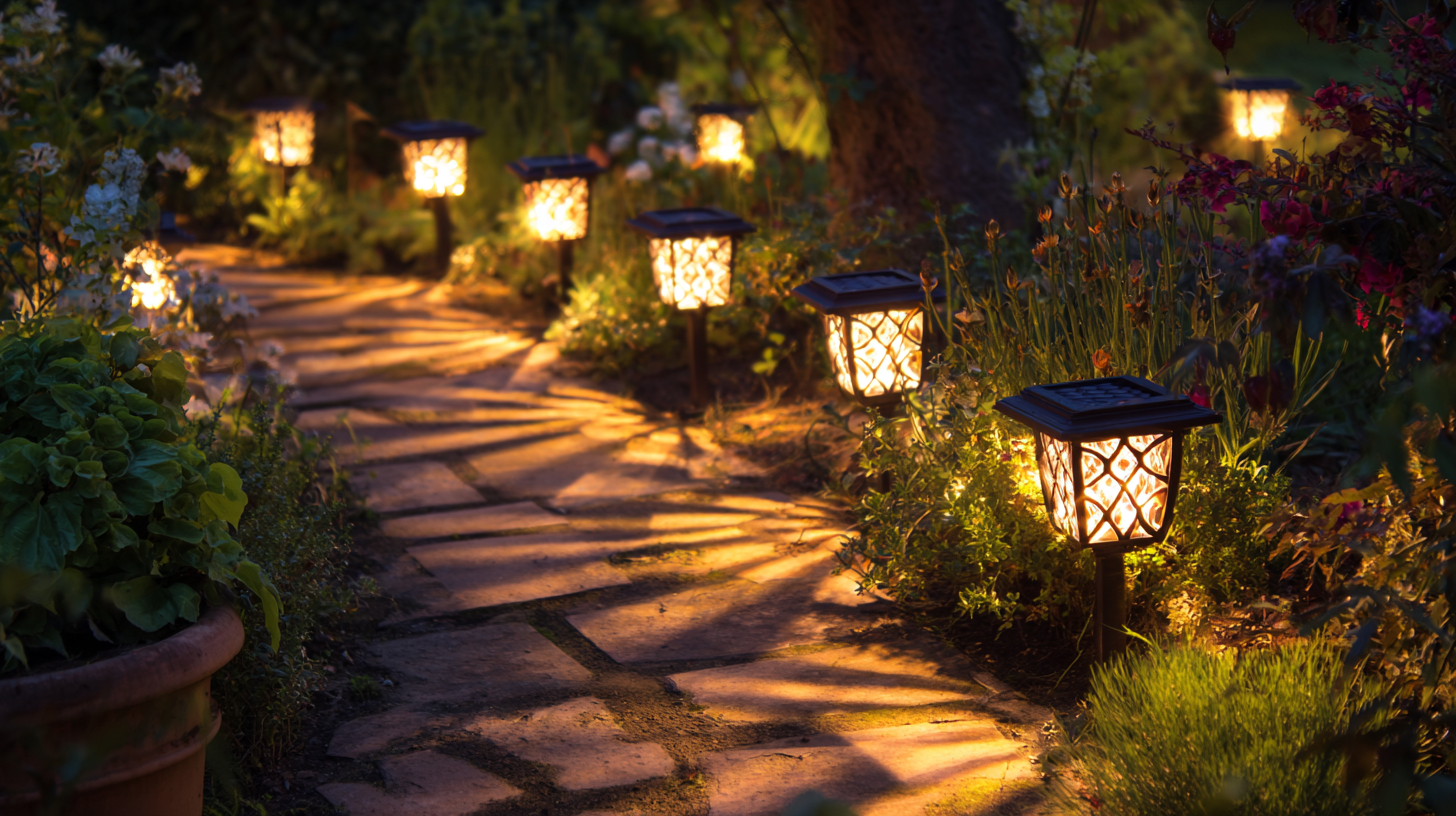2025 Trends in Outdoor Solar Lighting: Innovative Solutions to Illuminate Your Space
As we move towards a more sustainable future, the demand for outdoor solar lights is rising, leading to innovative solutions that not only enhance safety and aesthetics but also promote environmental consciousness. In 2025, trends in outdoor solar lighting are expected to evolve significantly, driven by advancements in technology and materials, coupled with a focus on energy efficiency. This blog will explore how top manufacturers in China are spearheading these innovations, leveraging their extensive export networks to bring cutting-edge solar lighting solutions to markets around the globe. By examining the latest design trends, technological advancements, and the growing popularity of solar-powered lights, we will uncover how these products are poised to illuminate our outdoor spaces more effectively than ever before.

Innovative Solar Technologies Shaping the Future of Outdoor Lighting in 2025
As we look towards 2025, the outdoor solar lighting industry is poised for remarkable advancements thanks to innovative technologies that promise to reshape our outdoor spaces. According to a recent report by Grand View Research, the global solar lighting market is projected to reach USD 15.3 billion by 2025, growing at a compound annual growth rate (CAGR) of 16.3%. This growth is largely fueled by the increasing demand for sustainable lighting solutions, which are not only energy-efficient but also cost-effective in the long run.
One of the standout innovations is the integration of smart technology into solar lighting systems. Smart solar lights, equipped with IoT capabilities, allow users to monitor and control their lighting remotely, optimizing energy usage and enhancing security. A study by MarketsandMarkets indicates that the smart solar market is expected to grow from USD 8.92 billion in 2020 to USD 24.52 billion by 2025, highlighting the growing trend of interconnected devices. Additionally, advancements in photovoltaic cell efficiency are leading to more powerful and longer-lasting lighting options, capitalizing on every drop of sunlight. This evolution in solar technology is not only making outdoor spaces safer but also more sustainable, aligning with the global push towards renewable energy solutions.
2025 Trends in Outdoor Solar Lighting: Innovative Solutions to Illuminate Your Space
| Trend | Description | Expected Impact | Innovative Technology Used |
|---|---|---|---|
| Smart Solar Lighting | Integration of IoT for remote control and monitoring | Increased energy efficiency and enhanced security | Smart sensors and connectivity |
| Design Versatility | Wide range of styles to suit various outdoor aesthetics | Improved user satisfaction and property value | Customizable solar panels and light fixtures |
| Enhanced Solar Panel Efficiency | Development of higher efficiency solar cells | Longer runtime and reduced power consumption | Monocrystalline and bifacial solar panels |
| Sustainable Materials | Use of eco-friendly materials in manufacturing | Lower environmental impact and consumer appeal | Recycled plastics and sustainable composites |
| Integrated Motion Sensors | Activation based on movement detection for energy saving | Increased security and reduced energy waste | Passive infrared sensors |
The Growing Demand for Solar Lighting Solutions: Industry Statistics and Forecasts
The demand for solar lighting solutions has seen a remarkable surge in recent years, driven by increasing awareness of sustainability and the need for energy-efficient alternatives. According to industry statistics, the global solar lighting market is projected to grow at an impressive rate, reaching a valuation of over $10 billion by 2025. This growth reflects not only the advancements in solar technology but also an evolving consumer preference towards eco-friendly options that reduce carbon footprints.

Moreover, as urban spaces continue to expand, municipalities are recognizing the importance of outdoor solar lighting in enhancing safety and aesthetics. These innovative solutions not only provide illumination for public areas but also contribute to lower energy costs and reduced environmental impact. As more homeowners and businesses invest in solar lighting, we can expect to see diverse applications ranging from decorative garden lights to robust street lighting systems designed to withstand the elements. This trend emphasizes a shift toward smarter, more sustainable urban planning that aligns with both ecological principles and community needs.
Sustainable Design Choices: Eco-Friendly Materials in Solar Lighting Manufacture
In recent years, the trend towards sustainable design has significantly influenced the solar lighting industry. According to a report by the International Renewable Energy Agency (IRENA), the global market for solar lighting solutions is projected to grow exponentially, reaching an estimated value of $9.5 billion by 2025. This growth is largely driven by innovations in eco-friendly materials used in the manufacture of solar lights, such as recycled plastics and sustainably sourced metals. These materials not only reduce the carbon footprint associated with production but also provide durability and longevity in outdoor applications.
Furthermore, a study from the Global Lighting Association indicates that transitioning to eco-friendly materials can decrease the overall environmental impact of outdoor lighting by up to 50%. Manufacturers are increasingly adopting bioplastics and other sustainable alternatives to traditional materials, aligning with the global push for greener practices. As consumers become more environmentally conscious, the demand for solar lighting solutions that prioritize sustainability and cost-effectiveness is expected to rise. This shift reflects not only a trend in consumer preferences but also a necessary response to climate change, making eco-friendly materials an essential consideration for the future of outdoor solar lighting.
Smart Lighting Systems: Integrating IoT with Outdoor Solar Solutions for Enhanced Functionality
As outdoor solar lighting continues to evolve, the integration of IoT (Internet of Things) into smart lighting systems is paving the way for innovative solutions. These advancements not only enhance functionality but also optimize energy consumption, ensuring that spaces are beautifully illuminated while remaining environmentally friendly. Smart lighting systems can automatically adjust brightness based on natural light levels or occupancy, providing both convenience and efficiency.
**Tip:** Consider installing solar lights with motion sensors that connect to a smart app. This allows you to monitor and control lighting schedules remotely, ensuring your outdoor areas are lit when needed most.
Moreover, IoT-enabled solar lights can gather data over time, providing insights into usage patterns. This can help property owners to make informed decisions about their lighting setups, potentially saving money and enhancing security.
**Tip:** Look for solar lighting options that offer adaptability, such as customizable color temperatures or settings for different occasions, creating the perfect ambiance while maximizing your outdoor space's potential.

Cost-Benefit Analysis: Evaluating the Long-Term Savings of Solar Lighting Investments
Investing in outdoor solar lighting has become a prudent choice for both residential and commercial properties as the trend towards sustainability grows. A careful cost-benefit analysis reveals that while the initial investment may seem higher compared to traditional lighting solutions, the long-term savings are significant. Solar lighting systems operate without the need for grid electricity, drastically reducing energy bills over time. Additionally, many solar fixtures require minimal maintenance, which further decreases ongoing costs.
Beyond financial considerations, the environmental impact also plays a crucial role in the decision to switch to solar lighting. By harnessing renewable energy, property owners actively contribute to reducing their carbon footprint. Moreover, advancements in solar technology have resulted in more efficient and stylish designs, making outdoor spaces not only brighter but also more aesthetically pleasing. This integration of functionality and eco-friendliness makes solar lighting a compelling investment for the future. As stakeholders evaluate their long-term goals, the transition to solar solutions emerges as a wise and sustainable choice.
